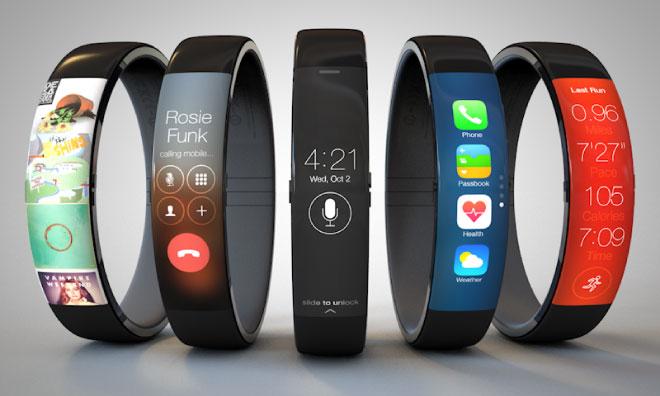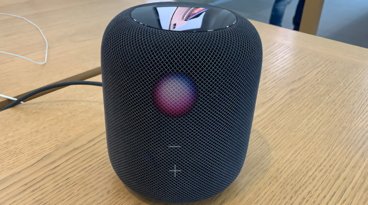Apple's 'iWatch' rumored to use optoelectronics to monitor heart rate, blood oxygen levels
Last updated
Apple may turn to optoelectronic sensor technology to help users of the company's so-called "iWatch" keep track of their heart rate and blood oxygen saturation, according to a Friday report from China.
Cupertino, Calif.-based Apple was also considering the addition of blood glucose monitoring, but that feature is believed to have been scrapped due to the "inaccuracy" of using optoelectronics for non-invasive blood glucose testing. Electronics industry analyst Sun Chang Xu made the predictions for China's Electrical Engineering Times.
Broadly speaking, medical sensors using optoelectronics measure changes in light reflected by the body. An array of light-emitting diodes are used to pass light into tissue, and sensors detect the amount and color of the light that bounces back.
Using optoelectronics for monitoring blood oxygen levels is a process known as pulse oximetry. Pulse oximeters — Â usually seen as clothesepin-like devices clipped to the end of a person's finger — Â use visible red and infrared LEDs to detect how much oxygen is carried in the blood's hemoglobin. Oxygenated hemoglobin absorbs more infrared light, while deoxygenated hemoglobin absorbs more visible red light.
Adding to the report's plausibility, Apple has brought on multiple biomedical experts with expertise in optoelectronic pulse oximetry in recent weeks. New hires Marcelo Malini Lamego and Michael O'Reilly are former executives at pulse oximetry company Masimo Corporation.
For heart rate monitoring, visible light is passed through a person's skin and absorbed by their blood. More light is absorbed when the body pumps more blood, and the changes in reflected light levels are tracked and used to calculate the person's heart rate.
Apple is said to have chosen the light-based technology over electrocardiography, a more accurate method which measures electrical impulses, due to the former's ability to continuously monitor heart rate with no action from the user. Most ECG-based products require multiple contacts, meaning users must either attach multiple diodes to their body or touch the product with both hands to get a reading.
Apple will likely exclude noninvasive blood glucose monitoring due to its "inaccuracy"
Many consumer-grade heart monitors — Â like Withings's Pulse — Â use optoelectronics. Those that feature single-contact ECG sensors often leverage proprietary and usually patented technology.
Apple has been seen contemplating embedded ECG sensors in the past, though there is little evidence to indicate where the company may be at with the technology. A 2010 patent application hinted at a method for future iPhones to identify users by their ECG signature.
Friday's report is the latest indication that Apple's expected foray into wearable devices will focus on biometrics. Well-connected analyst Ming-Chi Kuo of KGI Securities was the first to make that prediction, a case bolstered by recent hires and the revelation that Apple executives have met with the FDA to discuss "mobile medical applications."
 Shane Cole
Shane Cole















 Amber Neely
Amber Neely
 Thomas Sibilly
Thomas Sibilly
 AppleInsider Staff
AppleInsider Staff
 William Gallagher
William Gallagher
 Malcolm Owen
Malcolm Owen
 Christine McKee
Christine McKee









35 Comments
Blood glucose monitoring, however, is the killer app. It does not have to be super accurate, and can be augmented with direct blood tests for those with conditions that require better accuracy. For helping those with prediabetic conditions (just about anyone overweight) to change eating patterns, glucose monitoring would be invaluable even if the data were provided in a range.
Hey AI - this is the second straight day that you have incorrectly captioned the same Masimo photo. It is a FINGER sensor. It has nothing to do with fingerPRINTS. [Subsequent edit] Okay, you changed the caption to read "The Masimo rainbow blood oximeter." It's still incorrect. The device pictured is the FINGER SENSOR for the Masimo blood oximeter. Looks like Apple is not the only outfit that needs someone on their staff who knows something about medical devices.
I'm gonna miss all these rumours if this iWatch is ever going to be released. Not.
Blood glucose monitoring, however, is the killer app. It does not have to be super accurate, and can be augmented with direct blood tests for those with conditions that require better accuracy. For helping those with prediabetic conditions (just about anyone overweight) to change eating patterns, glucose monitoring would be invaluable even if the data were provided in a range.
Yup. I'm tempted to say that they shouldn't announce nor ship the wristband device until glucose monitoring can ship with it. Having that will be an automatic win worth billions of dollars. Millions of units at $400 to $500 easy.
Yup. I'm tempted to say that they shouldn't announce nor ship the wristband device until glucose monitoring can ship with it. Having that will be an automatic win worth billions of dollars. Millions of units at $400 to $500 easy.
There are several players with devices already on the market. These are expensive and require the insertion of a sensor under the skin. Even with such a sensor these devices need to be calibrated several times per day using a traditional finger prick method. If someone can develop an accurate, non intrusive way of continuously measure blood glucose levels they will indeed have hit the jackpot. Apple doesn't necessarily need to create such a device (sensor), but the iWatch needs to be the go-to display / recorder option. Once a cost effective, practical and above all, accurate sensor has been developed an artificial pancreas will effectively be a reality.